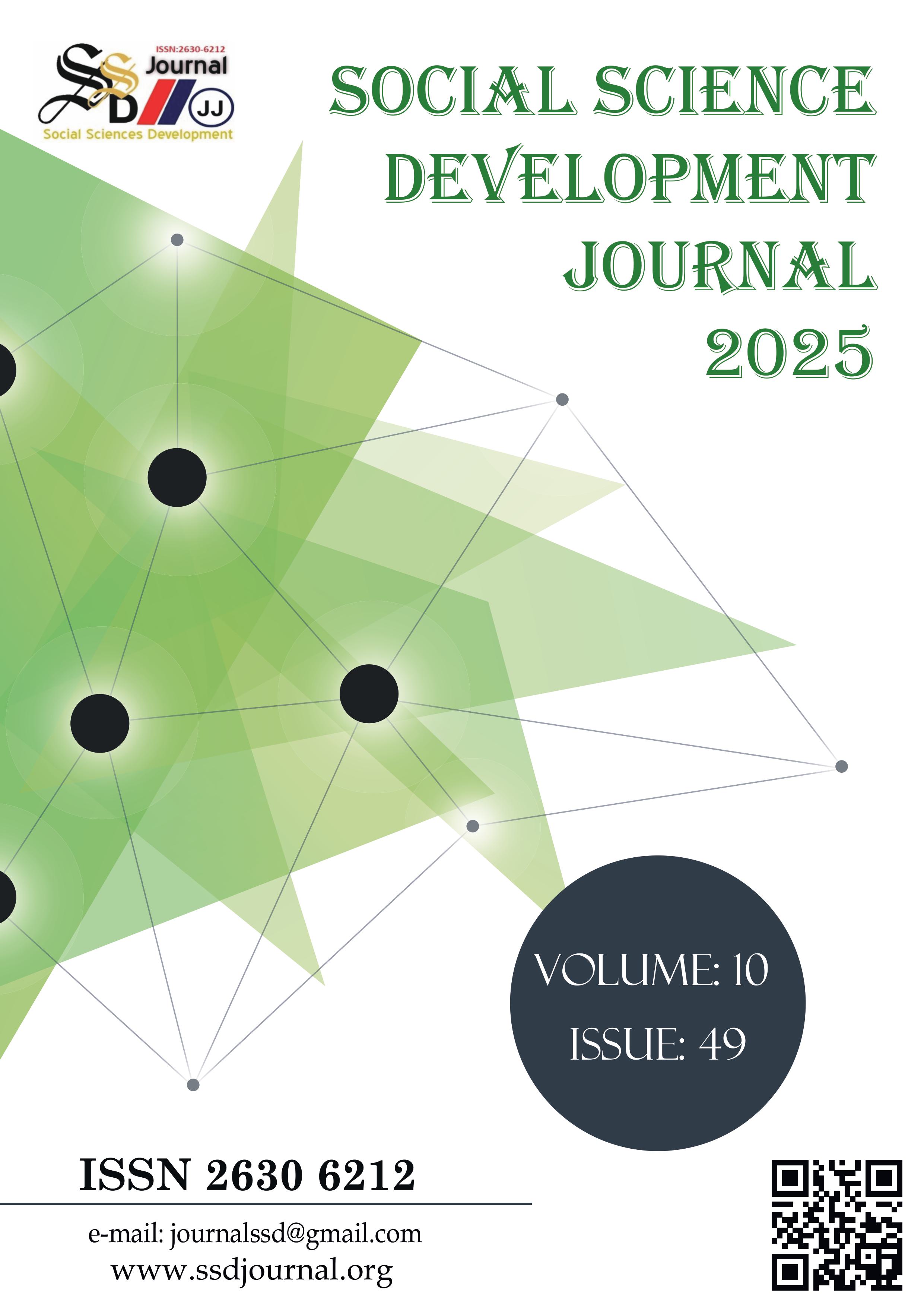WEAVING TRADES IN THE OTTOMAN EMPIRE
DOI:
https://doi.org/10.5281/zenodo.15002537Keywords:
Ottoman Institutions, Weaving Trades, Guild, Cullah, FabricAbstract
This study focuses on weavers, one of the tradesmen who occupied an important place in the Ottoman institutions. Without analysing the Ottoman institutions, it is not possible to depict the Ottoman Empire in a realistic way. From this point of view, the characteristics of the weaver tradesmen, who have an important place in both economic, social and cultural fields, the employees of the weaver tradesmen, the materials used in the production of the weaver tradesmen and the products produced by the weaver tradesmen, the legal issues arising from the guilds of the weaver tradesmen, as well as the quality of production and customer satisfaction such as the delivery of the product are emphasised. It was determined in the study that those who practised the profession of weaving were called cullahs and the pir of the cullahs was Hz. İlyâs. It was observed that the weavers generally worked in small workshops or in their homes, the employees of the weavers were trained through the apprenticeship system, apprentices could rise to journeyman and journeymen to master. It was understood that the most important materials used by the weavers were silk, wool and cotton, and that these materials were woven on looms of various sizes and dimensions, and that materials such as spindles, kirman and combs were also needed for weaving. It is understood that the weavers generally wove rugs and carpets with these materials, but they also produced many other garments and goods. It has been observed that the weavers faced legal problems arising from guild practices, tax obligations and customers, and these problems were solved according to the principle of balancing competition and protecting the rights of the relevant tradesmen. An attempt has been made to draw a general framework about the position of weavers in the Ottoman Empire.
References
Aytaç, A. (2019). Ahilikte Geçen Dokumacılıkla Alakalı Mesleklere Dair, SUTAD, 46, 317-328.
Bab Mahkemesi 46 Numaralı Sicil (1096-197/1685-1686), haz. İstanbul 2010 Avrupa kültür Başkenti Ajansı ve İslam Araştırmaları Merkezi (İSAM) Ortaklığı. İstanbul: İSAM Yayınları, 2010. https://www.kadisicilleri.org/index.php
Bozkurt, N. (2000). “İpek”, Türkiye Diyanet Vakfı İslam Ansiklopedisi. Erişim Tarihi: 3 Haziran 2023. https://islamansiklopedisi.org.tr/ipek
Bozkurt, N. (2019). “Pamuk” Türkiye Diyanet Vakfı İslam Ansiklopedisi. Erişim 3 Haziran 2023. https://islamansiklopedisi.org.tr/pamuk
Çelebi, E. (1996). Seyehatname, Topkapı Sarayı Kütüphanesi Bağdat 304 Numaralı Yazmanın Transkripsiyonu – Dizini, haz. Robert Dankoff-Seyit Ali Kahraman -Yücel Dağlı, İstanbul: Yapı Kredi Yayınları, I. Basım, 1996.
Çiftçi, C. (2004). “Müşteri Memnuniyeti, Kalite ve Osmanlı Esnafı”, Uludağ Üniversitesi Fen-Edebiyat Fakültesi Sosyal Bilimler Dergisi 5(7), 17-34.
Demirel, Ömer. “Osmanlı Esnafı (1750-1850)”, Türkler 14 (2002), 253-263.
Demirci, M (2003). İslamda Şehir ve Şehrin Sosyal Dinamikleri, İstem Dergisi 1(2), 129-145.
Emecen, F (1993). Cullah”, Türkiye Diyanet Vakfı İslam Ansiklopedisi. Erişim 22 Mart 2023. https://islamansiklopedisi.org.tr/culluh
Ergenç, Ö. (1988). XVIII. Yüzyılda Osmanlı Sanayi ve Ticaret Hayatına İlişkin Bazı Bilgiler”, Belleten Dergisi 52(203), 501-534.
Faroqhi, S.(2017). Osmanlı Zanaatkarları. İstanbul: Alfa Tarih, 1. Basım.
Genç, M. (2014). Klasik Osmanlı Sosyal-İktisadi Sistemi ve Vakıflar, Vakıflar Dergisi 42, 9-18.
Gök, M. O. (2017). Kahramanmaraş Aba Dokumacılığı, Akademik Bakış Dergisi, 63, 276-189.
Gürata, M. (1975). Unutulan Adetlerimiz ve Loncalar. Ankara: Tisa Matbaacılık.
Gürcan Yardımcı, K. (2016). Osmanlı Dönemi Dokuma Sanatı Ürünlerinden Örnekler, International Journal of Cultural and Social Studies (IntJCSS, 2(1), 219-241.
İnalcık, H., ve Arı, B. (2005). Türk-İslam-Osmanlı Şehirciliği ve Halil İnalcık’ın Çalışmaları, Türkiye Araştırmaları Literatür Dergisi 3(6), 27-56.
İstanbul Mahkemesi 154 Numaralı Sicil (1237-1246/1822-1831), haz. İBB Kültür A.Ş. ve Medipol Üniversitesi Hukuk Fakültesi Ortaklığı. İstanbul: İSAM Yayınları, 2010. https://www.kadisicilleri.org/index.php
Kal’a, A. (1995). “Esnaf”, Türkiye Diyanet Vakfı İslam Ansiklopedisi. Erişim 21 Mayıs 2023. https://islamansiklopedisi.org.tr/esnaf
Kütükoğlu, M. S. (2020). Osmanlı’nın Sosyo-Kültürel ve İktisadi Yapısı. Ankara: Türk Tarih Kurumu Yayınları, 2. Baskı.
Tepekaya, M., ve Atar, Z. (2018). (ed.), Geçmişten Günümüze Manisa. Manisa: Manisa Celal Bayar Üniversitesi Rektörlük Basımevi.
Tekin, A. S. (2019). Klasik Dönem Osmanlı Devleti İktisadi ve İçtimai Düzeninde Vergi Sistemi, ATAD, 1(1), 51-71.
Yıldız, D. (2022). Dokumanın Tarihsel Süreçte Başlangıcı ve Gelişimine Genel Bir Bakış, Hars Akademi, 5(1), 256-293.
Downloads
Published
How to Cite
Issue
Section
License
Copyright (c) 2025 Ebubekir YILDIRIM

This work is licensed under a Creative Commons Attribution 4.0 International License.



